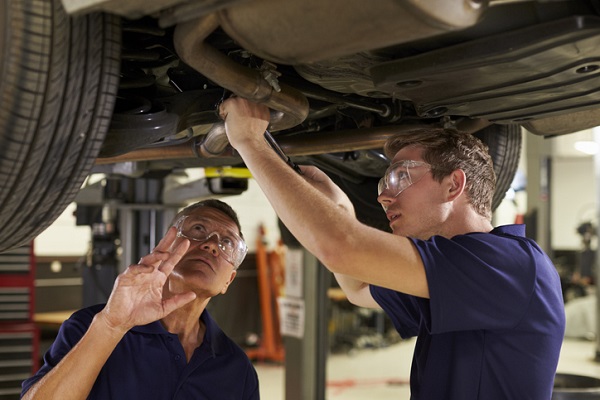A Guide to Replacing Brake Lines for Students in Auto Repair Training

Performing repairs on an automobile requires knowledge, dexterity, and precision. One part of the vehicle that may occasionally need to be replaced is the brake lines. Essentially, brake lines transport fluid between brake components. But for a variety of reasons, simple deterioration being one of them, the brake lines may stop functioning effectively, which can render the rest of the braking system defective. As this can be very hazardous, it is important that the damaged brake lines be replaced with new ones.
As an auto mechanic, you will develop the ability to determine if and when a brake line needs to be replaced, and learn how to perform the replacement yourself. Here are things you will want to know at different stages of the procedure starting from identifying the damage to replacing the part.
How do You Know When Brake Lines Need to Be Replaced?
First, check the brake line with a flashlight. If you see fluid, it might mean that there is a hole in the line, and if you see rust, it may mean that there is about to be a hole. Neither of these are good. Next, look at the tires. The presence of fluid on the inner surfaces of the tires may be evidence of a leak in the brake lines.
Customers may also complain that their brakes feel different. For example, they may say that when they apply pressure to the brake pedal they notice that they have to press harder than usual to stop the car. This might mean that the brake line is damaged and that insufficient fluid is being transported to the brakes.

During your auto repair training you’ll learn to dismantle and reassemble brake lines, which can help you see how brake lines work and when they need to be replaced.
An Automotive College Guide to Replacing Your Brake Lines
Once you have determined that a vehicle’s brake lines need to be replaced, you are ready to begin the repairs. Here’s a brief step-by-step guide to how to remove the old brake lines and install new ones to complement what you will learn in automotive college:
STEP I: Carefully and attentively inspect the car as you remove the old brake line. You can take notes or pictures to remember how the brake lines were secured and where they were attached. When removing the brake line, plug the end that is attached to the master cylinder so you will not lose all your braking fluid. Do not rush to remove the old line as you might damage the frame and other nearby lines.

STEP II: Before installing your new brake line, verify that it is long enough to reach from the master cylinder to the wheel. Once you’ve verified the length, screw in both sides and fasten the line into the mounts so it remains motionless when the car is moving. Lastly, you should bleed the brakes of the wheel which corresponds with the line you are replacing.
STEP III: Once you’ve replaced the brake line, you should take the vehicle for a test drive to ensure that the brakes work well. You can also check the ground beneath the wheel for any evidence of leakage.
Are you looking for auto mechanic training in Ontario?
Contact CATI to find out more about our programs!
